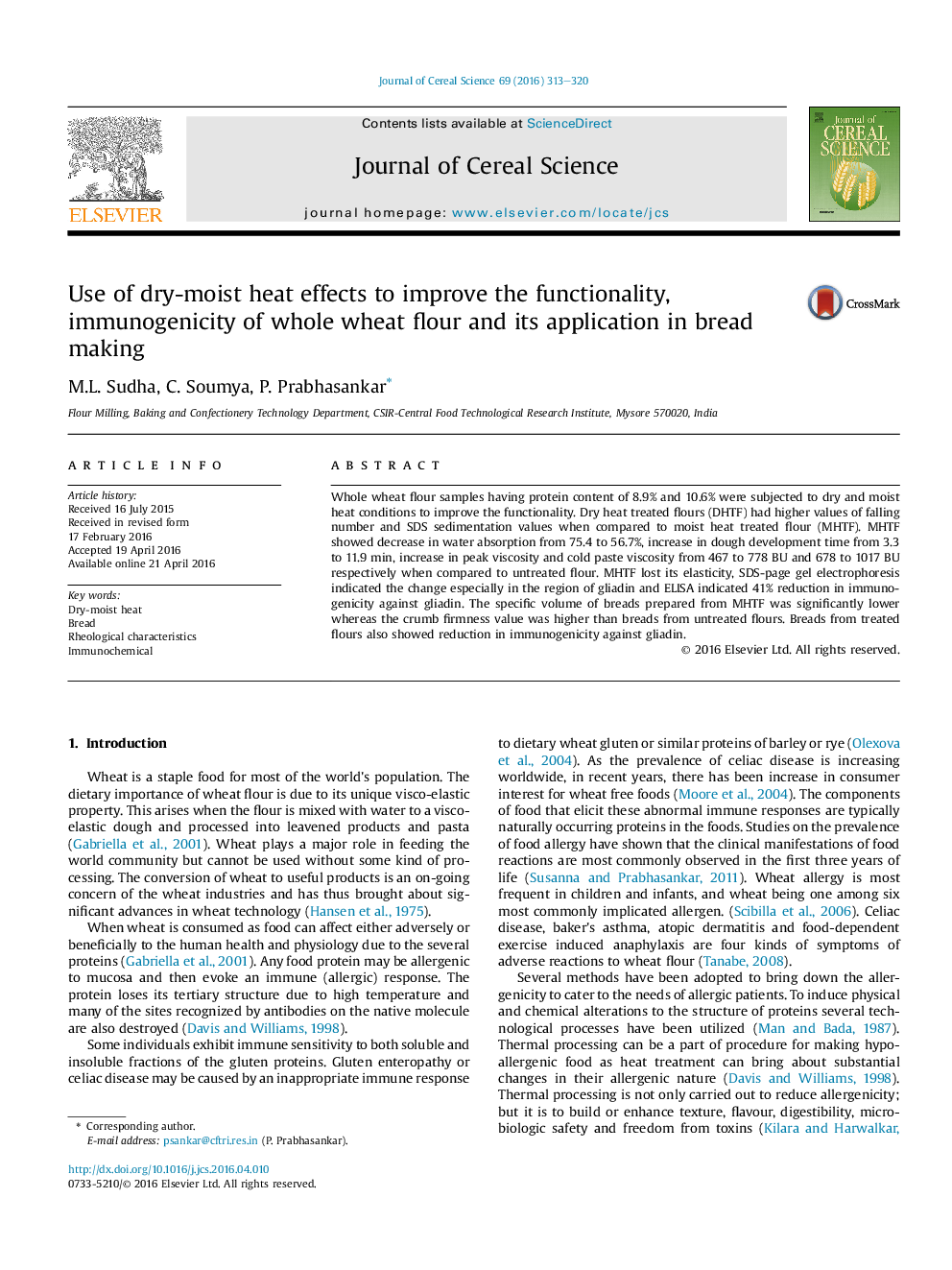| Article ID | Journal | Published Year | Pages | File Type |
|---|---|---|---|---|
| 4515598 | Journal of Cereal Science | 2016 | 8 Pages |
•Modification of flours by dry-moist heat treatments has been investigated.•Protein and starch modification were seen in rheological characteristics.•Moist heat treated flours behaved as non gluten flours.•Treated flours and breads showed reduced hypoimmunogenic properties.
Whole wheat flour samples having protein content of 8.9% and 10.6% were subjected to dry and moist heat conditions to improve the functionality. Dry heat treated flours (DHTF) had higher values of falling number and SDS sedimentation values when compared to moist heat treated flour (MHTF). MHTF showed decrease in water absorption from 75.4 to 56.7%, increase in dough development time from 3.3 to 11.9 min, increase in peak viscosity and cold paste viscosity from 467 to 778 BU and 678 to 1017 BU respectively when compared to untreated flour. MHTF lost its elasticity, SDS-page gel electrophoresis indicated the change especially in the region of gliadin and ELISA indicated 41% reduction in immunogenicity against gliadin. The specific volume of breads prepared from MHTF was significantly lower whereas the crumb firmness value was higher than breads from untreated flours. Breads from treated flours also showed reduction in immunogenicity against gliadin.
